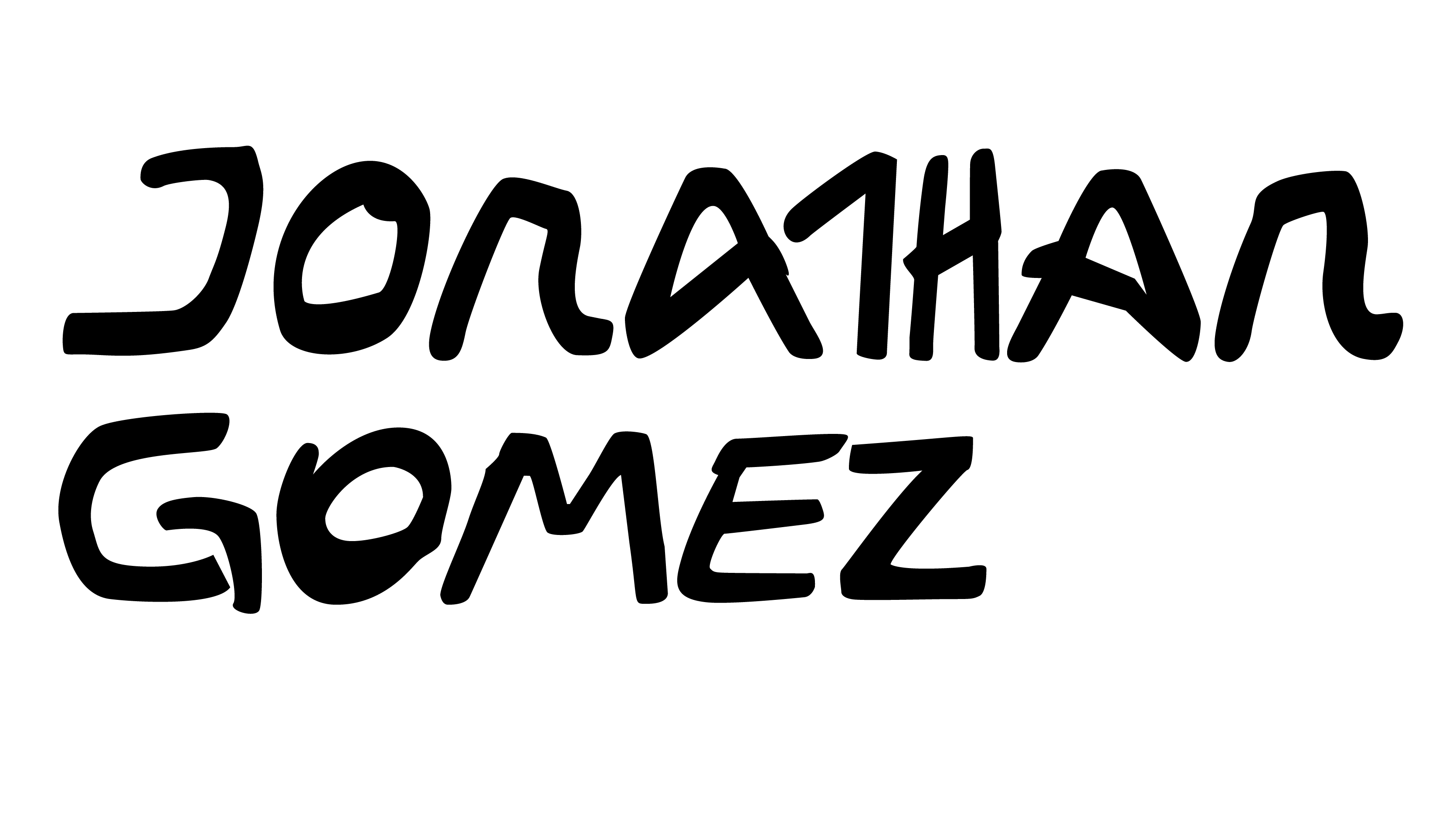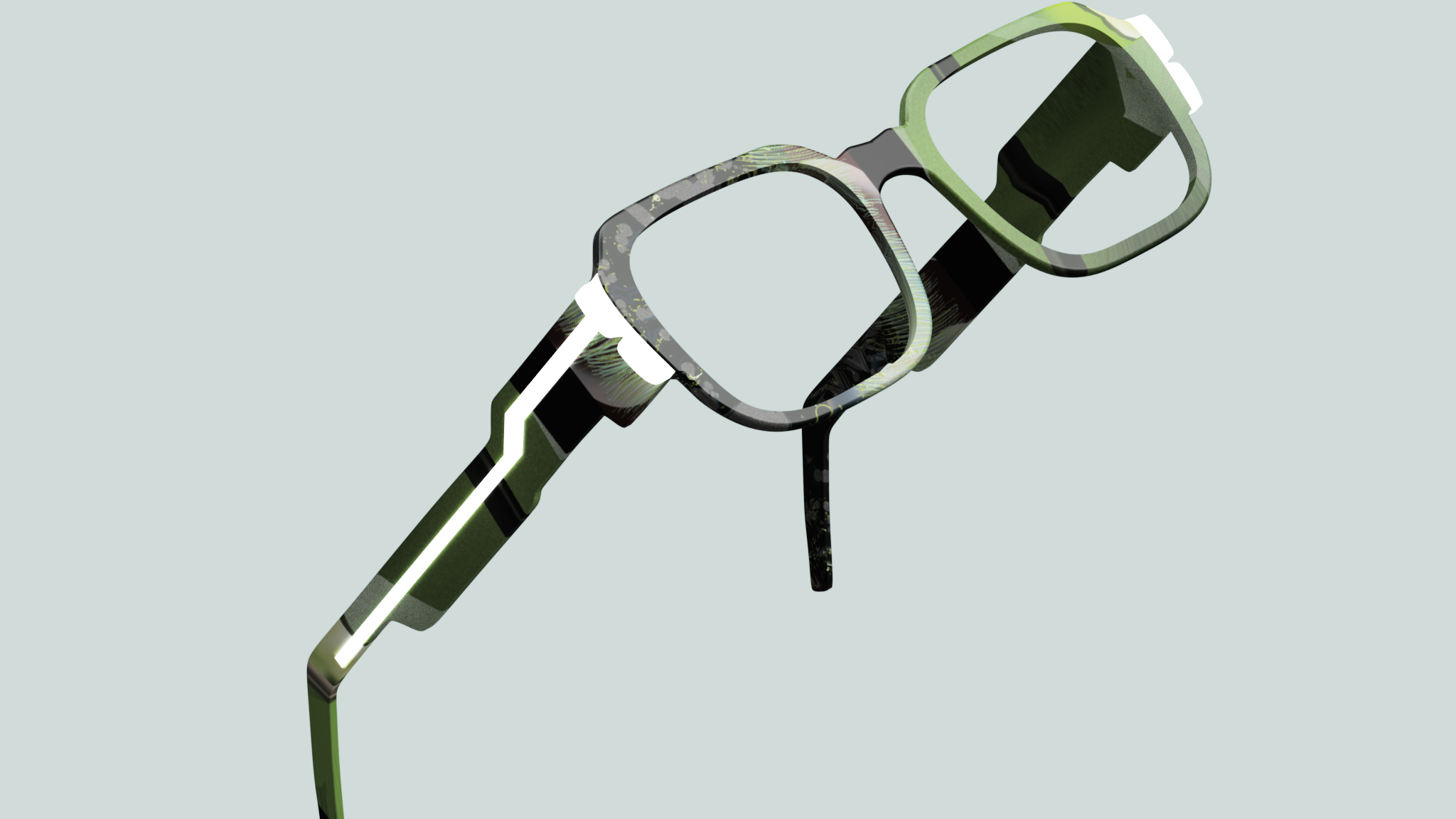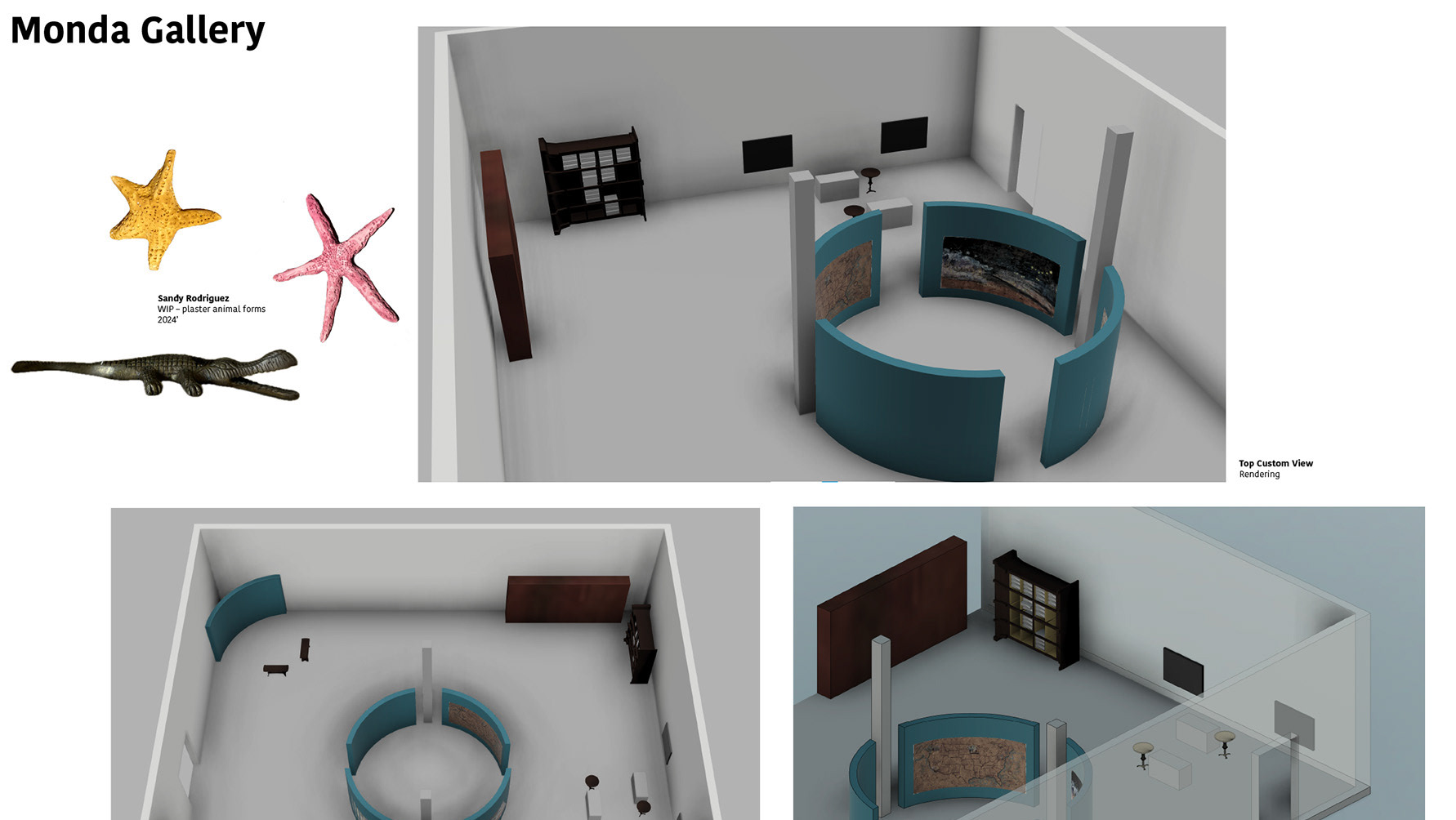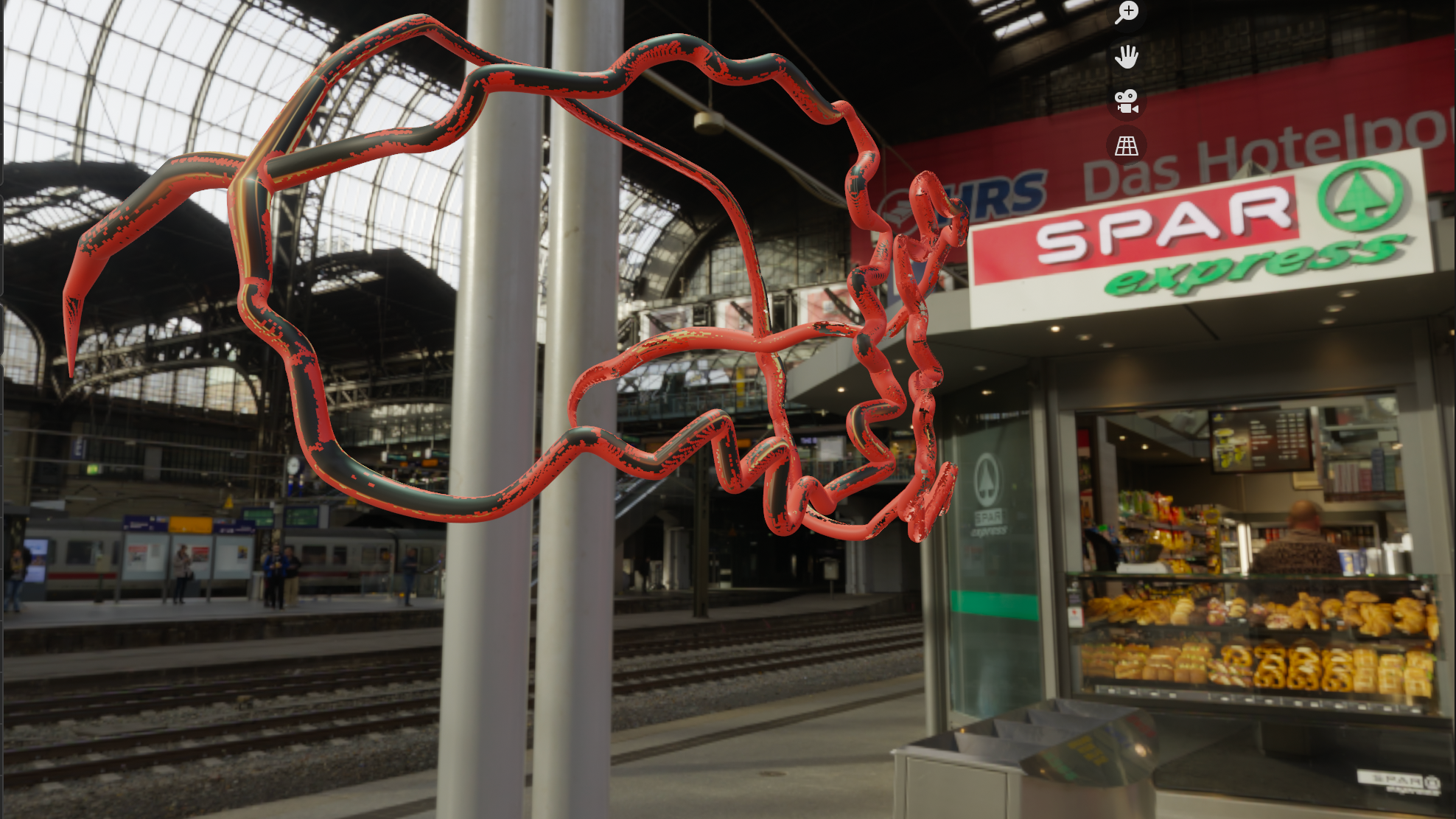Technical Specifications
Shield AR is a mixed reality device that attaches to most kinds of glasses. Once secured, the projection overlays the interface on the user's lenses.
The physical specifications of this device were designed around maintaining a certain angle to project onto the user's lenses while fitting a wide array of popular frame styles.
With some photonics research and speaking to Arman Klein(1), an electrical engineer – technology would be feasible.
Like many people, fashion is an important part of how I think of myself and therefore move through the world. Being a best friend to your clothes is a notion that informed this project– one centered around the intersection of emergent technology and eyewear.
Unlike mixed reality frames with embedded hardware, Shield AR allows for mixed reality experiences to continue seamlessly from prescription glasses, blue-light lenses, and sunglasses.
The term “enclothed cognition” describes the systematic influence that clothes have on the wearer's psychological processes.
The term was the result of experiments in which people performed the same tasks wearing the same garment they were asked to wear; but performed better when the same coat was called a lab coat instead of a painter's coat.
So, we can consider how the form factor of a wearable can signal a symbolic meaning- changing a wearable device from a gadget to a high-value fashion accessory.
So, I spoke to subject matter experts in fashion design, fashion marketing, and XR design, and all agreed that symbolic meaning plays a role in our attire.
which was the lens for
social acceptability, potential use cases and modality, and environmental sustainability
At this time, in March 2023, I was conducting surveys and experiments incorporating frame prototypes. However, learning about the OQmented tech generated an interest in conceptualizing how this tech could be part of a more fashion-forward device.
tortoiseshell, marble, limestone, and even alge.
The Adaptive Field is a proprietary application for Shield AR that allows users to block out certain parts of their environment to then hone in on the areas of focus. Through object recognition, users can identify the areas and objects they wish to leave unobscured for a focused experience. The appearance of the vignettes is based on color schemes that support focus. More on the research of these interfaces is in the Naturalist section of this case study.




